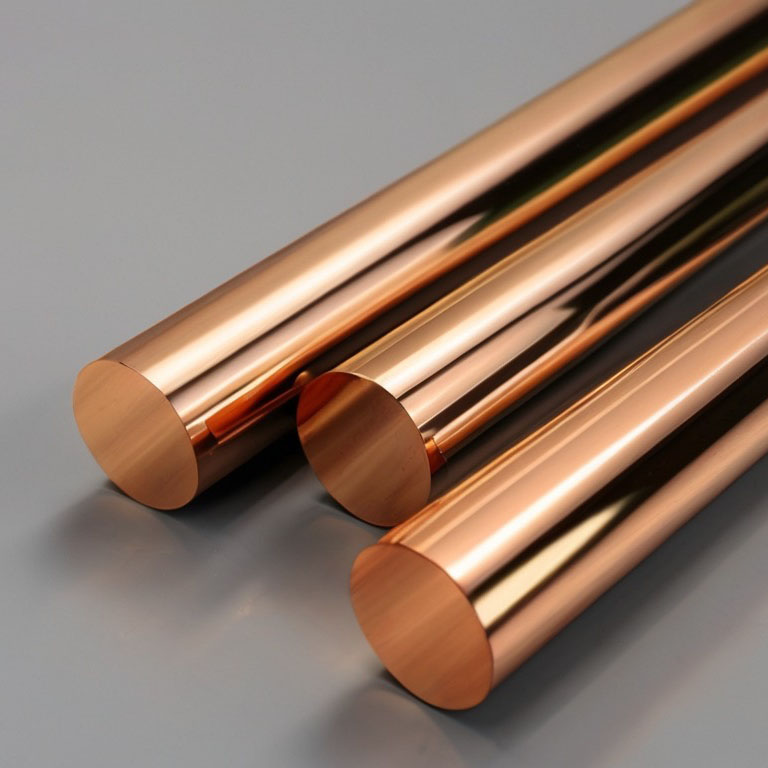Forging and Drawing Process of Beryllium Copper
Beryllium copper alloy processing involves several critical steps to achieve high performance and dimensional accuracy. Among these, forging, extrusion, and cold drawing are essential for refining microstructure, eliminating defects, and enhancing mechanical and surface properties.
Part I: Forging Process of Beryllium Copper Alloys
Forging is a key manufacturing step for beryllium copper alloys. It improves mechanical properties, increases density, eliminates casting defects such as porosity and segregation, and enhances internal structural uniformity.
1. Forging Preparation
Raw Material Selection: Use high-quality beryllium copper alloy ingots with uniform and clean chemical composition.
Preheating: Preheat the alloy to 400–600°C before forging to reduce thermal stress and deformation, and to ensure forging quality.
2. Forging Procedure
(1) Initial Forging
Temperature Control: Heat the ingots to the forging temperature (650–800°C).
Forging Operation: Use hydraulic presses or hammers to deform the material, eliminate internal voids, and refine the grain structure.
(2) Intermediate Forging
Reheating: Reheat the pre-forged billet to maintain proper forging temperature.
Forging: Continue multiple forging passes to further densify the structure and approach final dimensions.
(3) Final Forging
Temperature: Slightly lower than initial forging, typically 500–700°C.
Precision Forging: Use precision dies and presses to achieve final shape and surface finish, ensuring dimensional accuracy.
3. Post-Forging Treatment
Heat Treatment: Aging or solution treatments are usually applied after forging to enhance strength and stability.
Inspection: Use non-destructive testing (NDT) methods such as ultrasonic or X-ray, along with mechanical property testing, to ensure compliance with standards.

Part II: Extrusion and Drawing Process for Beryllium Copper Rods
Extrusion and cold drawing are essential processes in producing beryllium copper rods with high dimensional precision and excellent performance.
1. Extrusion Process
(1) Raw Material Preparation
Select high-quality beryllium copper ingots, clean the surface, and preheat to the extrusion temperature.
(2) Extrusion Operation
Heating: Heat ingots to 650–850°C.
Extrusion Equipment: Use hydraulic or mechanical extruders with appropriate dies to form rod shapes.
Control Parameters: Adjust extrusion speed and pressure to ensure uniformity and surface integrity.
(3) Cooling and Straightening
Cooling: Rapid cooling after extrusion to prevent deformation and oxidation.
Straightening: Cold-straighten the rods to ensure linearity and dimensional consistency.
2. Cold Drawing Process
(1) Preparation
Clean and preheat extruded rods to remove oxide layers and surface defects.
(2) Drawing Operation
Equipment: Pass rods through successive dies using a drawing machine to reduce diameter gradually.
Parameter Control: Maintain stable drawing speed, die angles, and lubrication to ensure dimensional accuracy and surface finish.
(3) Heat Treatment & Cooling
Aging Treatment: Improve strength and stability after drawing.
Cooling: Quench quickly to maintain shape and dimensions.
3. Inspection and Packaging
Quality Control: Dimensional measurement, surface inspection, and mechanical testing ensure product compliance.
Surface Treatment: Polish or coat rods to improve corrosion resistance and appearance.
Packaging: Standard-compliant packaging to protect against damage during transport and storage.
Summary
Forging, extrusion, and drawing are essential processes in the production of high-performance beryllium copper products. Through meticulous process control and strict quality management, manufacturers can produce components with excellent mechanical strength, thermal conductivity, and wear resistance, suitable for demanding applications in electronics, electrical engineering, aerospace, automotive, and more.
